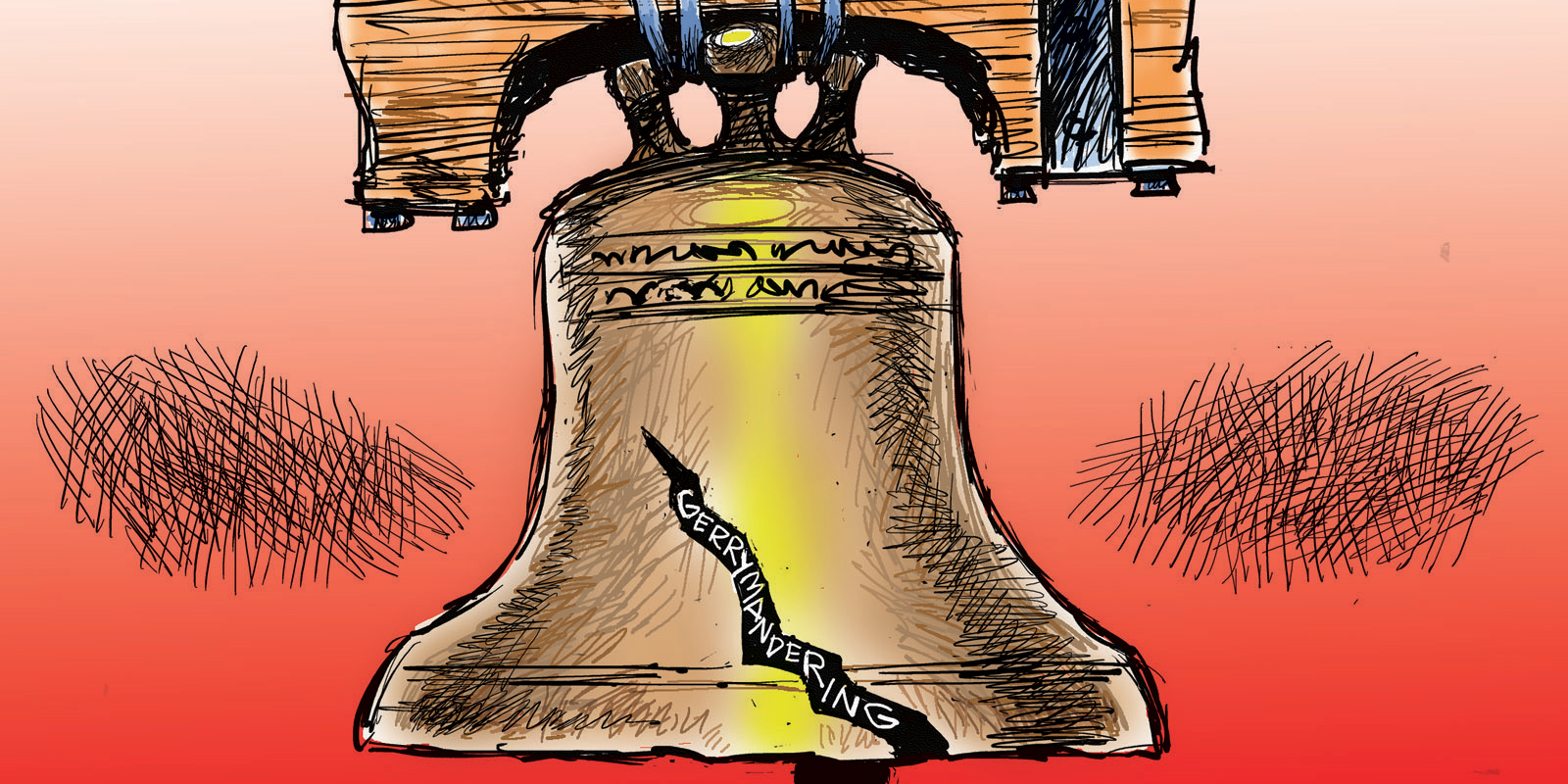
Unfortunately, last week the conservative dominated Supreme Court withdrew the emergency safety net for FAIR elections that the federal lower courts had provided. Chief Supreme Court Justice John Roberts’s justification was that it is a task that only politicians could do. He is 100% WRONG, Both Democrats and Republicans are guilty of partisan gerrymandering and can’t be trusted to provide fair elections that don’t unfairly advantage themselves!!!
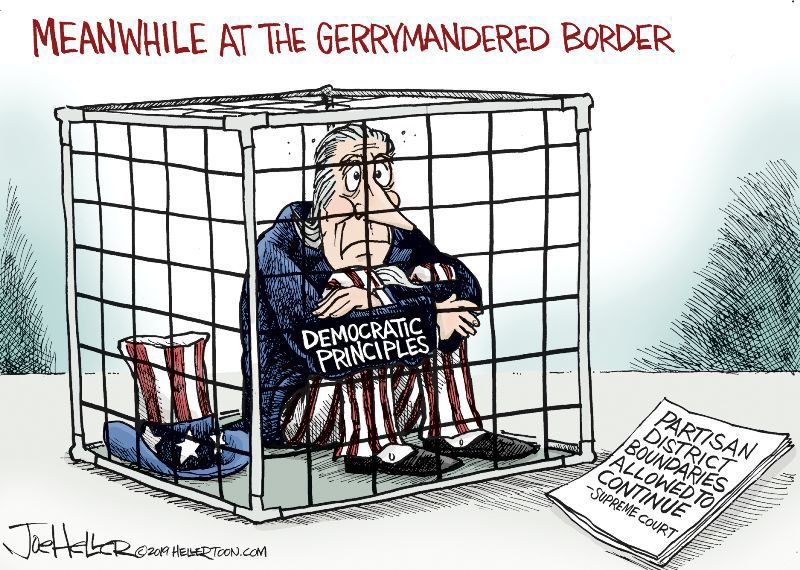
The Supreme Court has locked up democratic rule and set free authoritarian tyranny
The question before the Supreme Court was the legality of partisan gerrymandering by both Democrats and Republicans. Partisan gerrymandering is the creation of election districts that make it possible for one political party to win as many elections as possible, while those same created election districts make the opposing political party lose as many elections possible. In other words, the election districts are created based on the political affiliation of the voter and not on where the voter lives. Partisan gerrymandering is done by both political parties, which is why both Democrats and Republicans can’t be trusted to provide fair election districts.
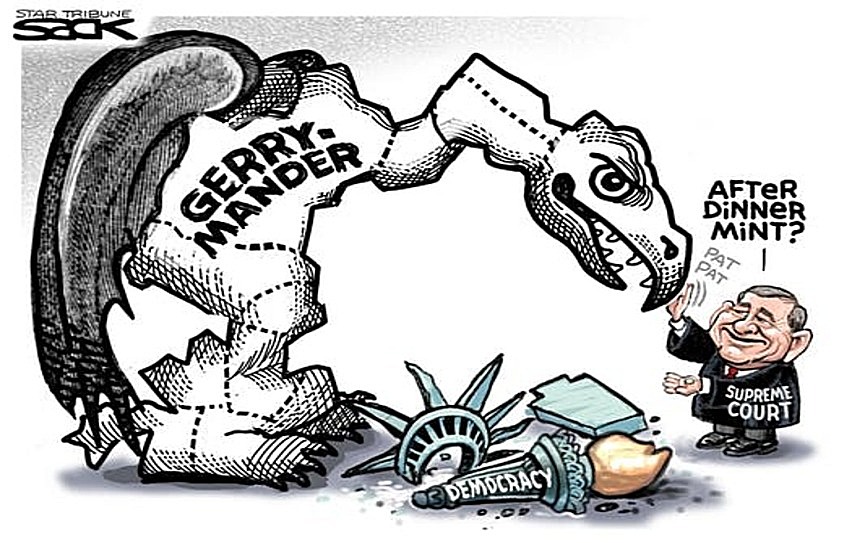
Instead of slaying the beast of unfair elections Supreme Court Chief Justice John Roberts chose to FEED it!!!
The Republican gerrymandering the Supreme Court examined occurred in North Carolina (Rucho v. Common Cause). A three-judge panel struck down all 13 of North Carolina’s Congressional districts on the grounds that it was gerrymandering in favor of the Republican Party. Their decision was made easier by the fact that Republican leaders in the North Carolina General Assembly openly conceded that the 2016 map was drawn to benefit Republicans. They hired a consultant from the Republican National Committee to draw the Congressional map and excluded Democrats from the process. The consultant testified in court that he was told: “to minimize the number of districts in which Democrats would have an opportunity to elect a Democratic candidate.”
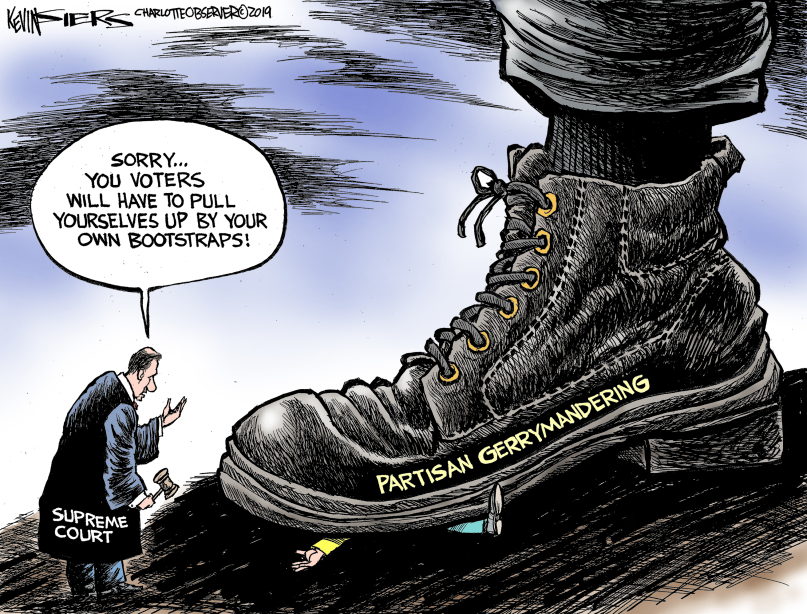
The Supreme Court ruled 5-4 that American citizens are on their own when it comes to fighting unfair partisan elections
The 3 judge panel wrote in a lengthy opinion, “Rather than seeking to advance any democratic or constitutional interest, the state legislator responsible for drawing the 2016 plan, Rep. David Lewis, openly declared that he drew the map to advantage Republican candidates because he thinks “electing Republicans is better than electing Democrats.” But that “is not a choice the Constitution allows legislative map drawers to make,” said the 3 judge panel. The decision found that North Carolina Republicans violated the following 3 separate constitutional provisions:
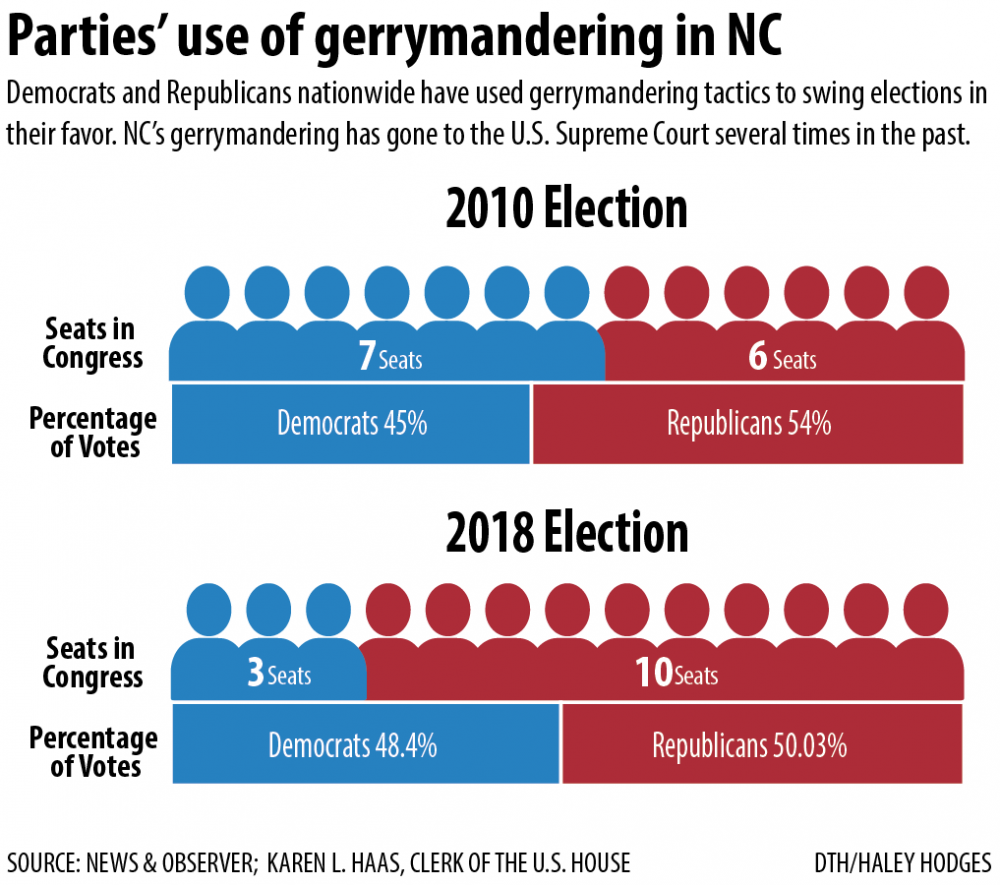
1) Equal Protection Clause– “Because the General Assembly enacted the plan with the intent of discriminating against voters who favored non-Republican candidates.”
2) The First Amendment- “By unjustifiably discriminating against voters based on their previous political expression and affiliation.”
3) Article I of the Constitution- “By exceeding the scope of the General Assembly’s delegated authority to enact congressional regulations and interfering with the right of ‘the People’ to choose their Representatives.”
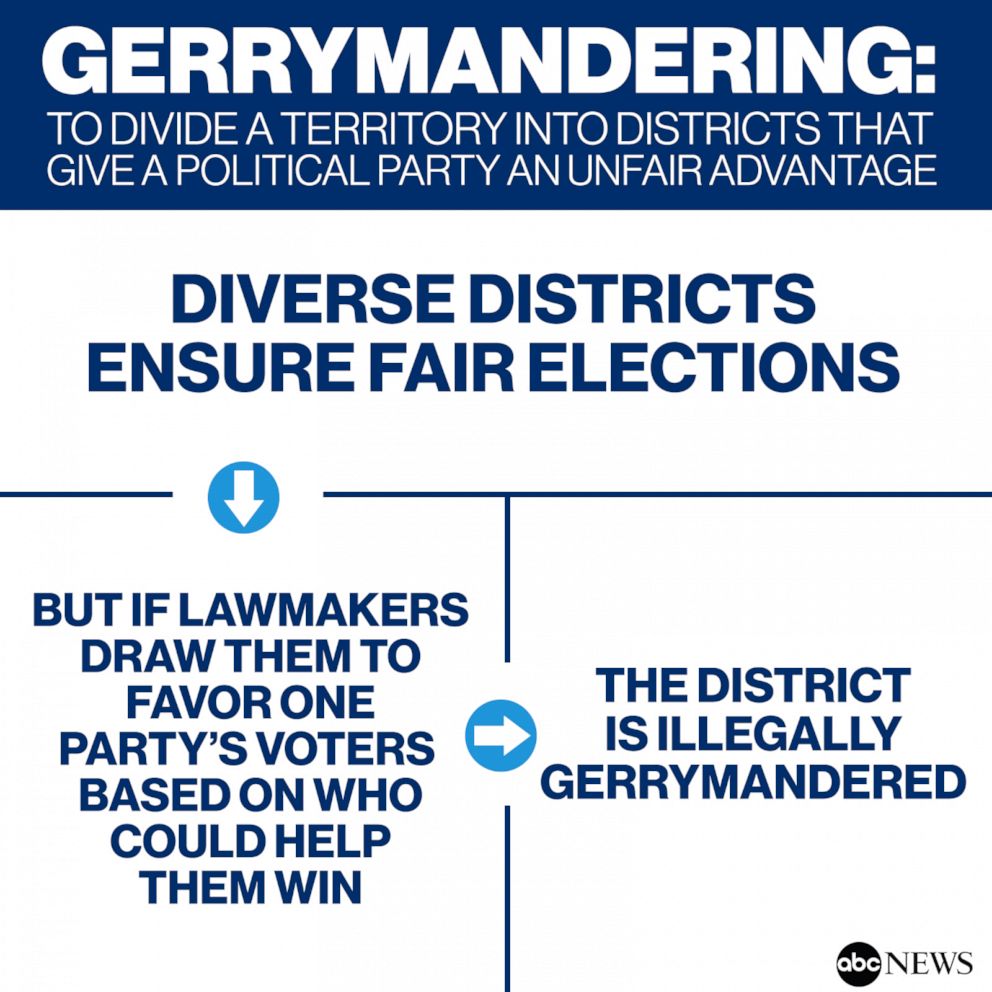
The Democrat gerrymandering the Supreme Court examined occurred in Maryland (Lamone v. Benisek). The issue in the case was Maryland’s 6th district which historically favored Republicans. It was redrawn in 2011 to swing the political majority to a Democratic one by gerrymandering to dilute the Republican vote. Maryland voters filed suit, stating that the gerrymandering violated their right of representation under Article One, Section Two of the U.S. Constitution and freedom of association of the First Amendment. A 3 judge panel subsequently ruled on November 7, 2018, finding for summary judgment in the plaintiff’s favor that the redistricting of the 6th District was unconstitutional, and required the state to redraw the state’s redistricting maps in a more neutral manner by March 7, 2019, to be approved by the Court.
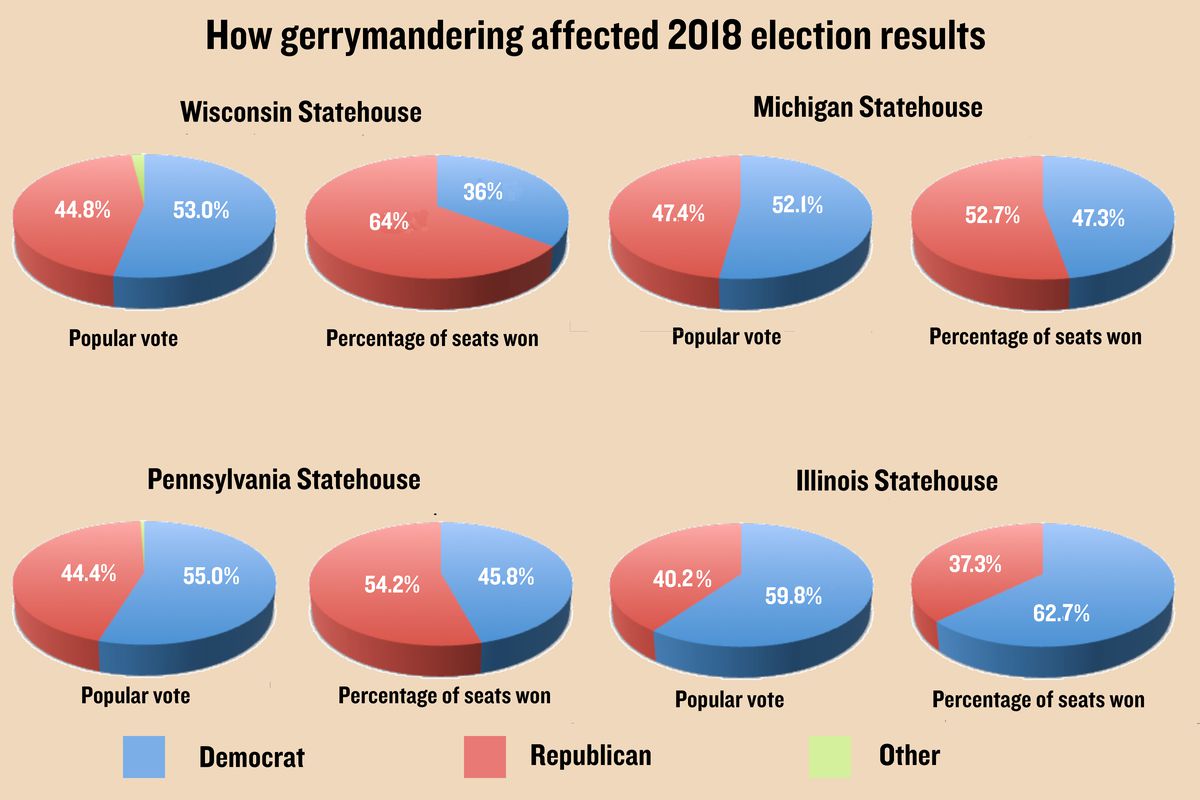
The Supreme Court finally weighed in on the legality of partisan gerrymandering last week with a ruling that pleasantly surprised some and greatly disappointed others. Since the Supreme Court has clearly ruled that racial gerrymandering was unconstitutional it’s ruling on partisan gerrymandering was unexpected by many Court observers. Chief Justice Roberts writing for the 5 Justice ruling majority stated:
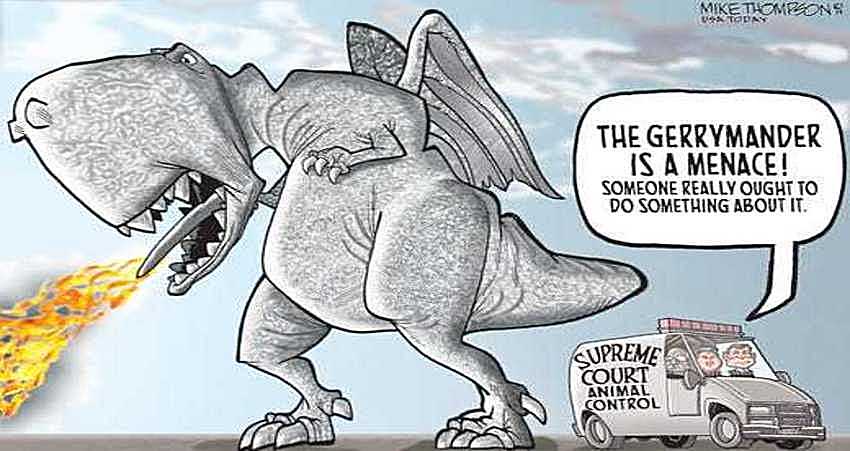
“Excessive partisanship in districting leads to results that reasonably seem unjust, the districting plans at issue here are highly partisan, by any measure. The question is whether the courts below appropriately exercised judicial power when they found them unconstitutional as well.” The answer, he wrote, is no. “There are no legal standards discernible in the Constitution for making such judgments, let alone limited and precise standards that are clear, manageable and politically neutral. Federal judges have no license to reallocate political power between the two major political parties, with no plausible grant of authority in the Constitution and no legal standards to limit and direct their decisions.” He was joined in the majority opinion by Justices Clarence Thomas, Samuel A. Alito Jr., Neil M. Gorsuch, and Brett M. Kavanaugh.
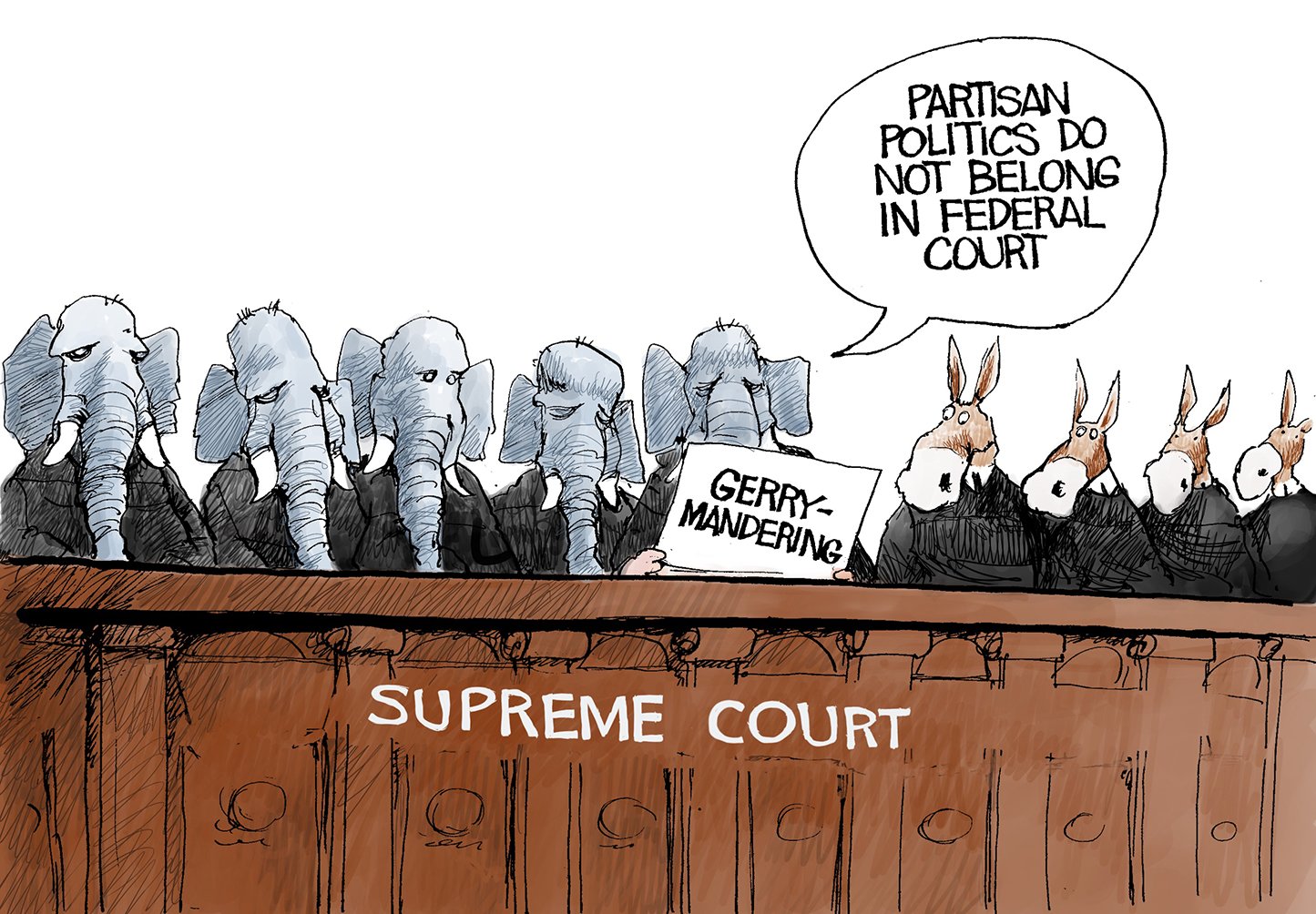
Since Republicans have benefited the most from abusive partisan gerrymandering, it was no surprise that a Republican partisan Supreme Court gave their fellow Republicans the green light to continue to abuse and subvert American democracy
Justice Elena Kagan was so disturbed by the majority ruling that she took the unusual step of reading the 4 Justice dissent from the Supreme Court bench. She said: The Supreme Court had refused for “the first time ever” to “remedy a constitutional violation because it thinks the task beyond judicial capabilities.” “Partisan gerrymanders in these cases deprived citizens of the most fundamental of their constitutional rights.” The gerrymandering “debased and dishonored our democracy, turning upside-down the core American idea that all governmental power derives from the people. If left unchecked,”
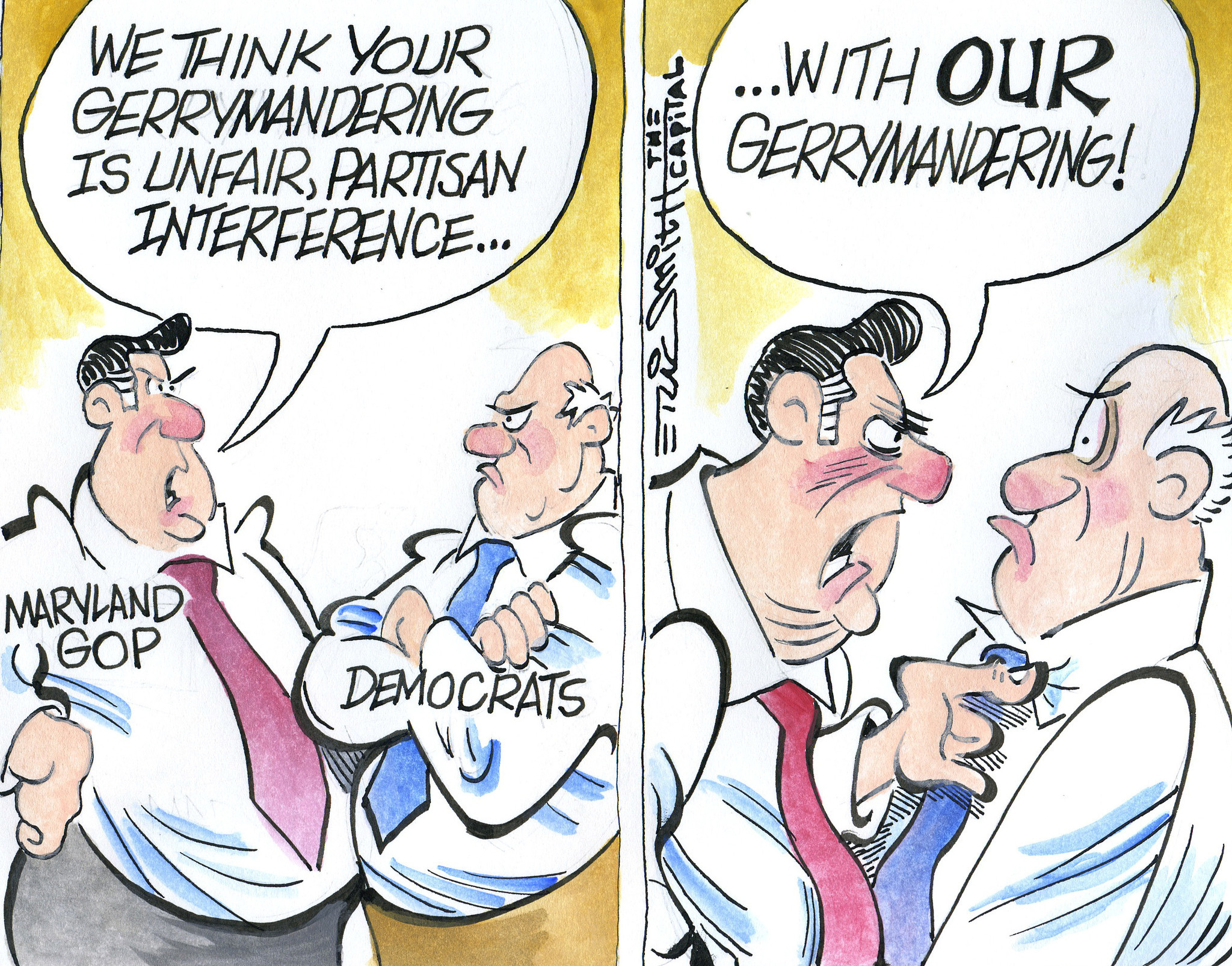
Both Democrats and Republicans are GUILTY of partisan gerrymandering which is why both CAN NOT be trusted to draw election districts anywhere in America
Kagan cautioned, “gerrymanders like the ones here may irreparably damage our system of government.” Kagan noted in the dissent that Republicans had won nine of 12 congressional seats in North Carolina after receiving just 50 percent of the vote. And that Maryland Democrats won seven of eight House seats after receiving no more than 65 percent of the vote, she asked: “Is that how American democracy is supposed to work?” Her answer: “I have yet to meet the person who thinks so.” She was joined in the dissent opinion by Justices Ruth Bader Ginsburg, Stephen Breyer, and Sonia Sotomayor.
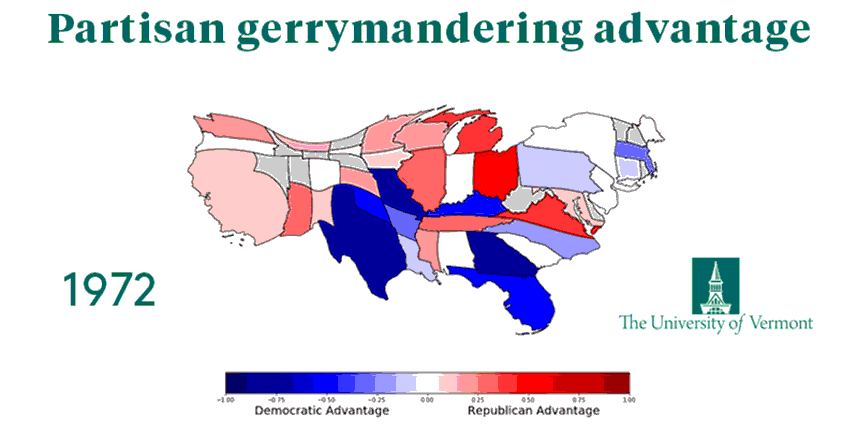
Partisan gerrymandering has had an effect on every state in America
Harvard political scientist Ryan Enos summed it up best in his tweet: “The Court’s gerrymandering decision seems to lock-in an essentially non-democratic feature of American politics. Elected representatives can rig the system to remain in power indefinitely and this cannot be challenged.”
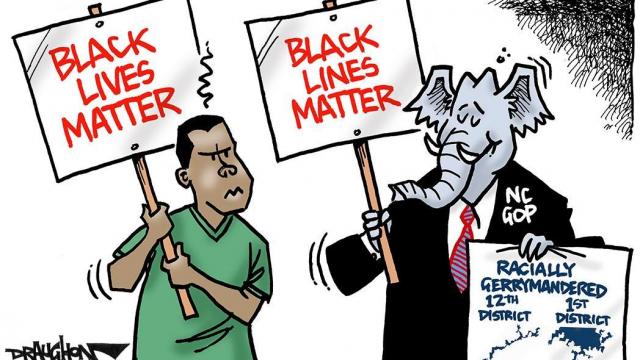
Fortunately the Supreme Court has ruled that racial gerrymandering is illegal
The bottom line is the Supreme Court decision opens the door to America returning to the days of Jim Crow without the racial segregation, days when an authoritarian nation existed within a national democracy from the end of Reconstruction right up until the 1960s Civil Rights Movement. Jim Crow wasn’t just racially discriminatory; it was also an anti-democratic system rigged to exclude votes so whites couldn’t lose their grip on political power. The difference now is people being denied their voice based on political affiliation and not race so Republicans or Democrats, depending on who’s in power, can deny the other from gaining power!!!

Unfortunately Chief Justice Roberts thinks the American electorate is DUMB ENOUGH to believe that there is nothing the Supreme Court can do to stop partisan gerrymandering
The only way to prevent this travesty of entrenched authoritarian power to American democracy is for every state in America to follow the lead of California and 8 other states (Arizona, Colorado, Hawaii, Idaho, Michigan, Montana, New Jersey and Washington), and establish an independent commission of NON-ELECTED citizens to draw ALL electoral districts within the state.
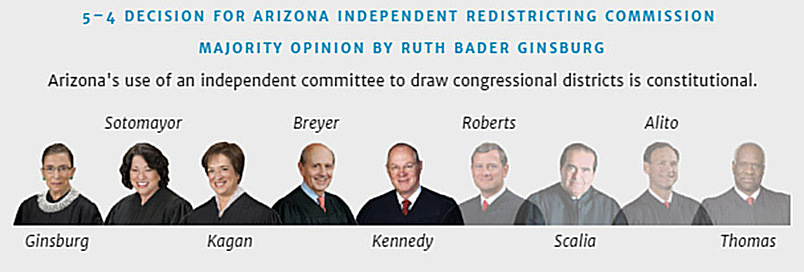
Since the Republican partisan Supreme Court decided to play politics instead of enforcing American constitutional law, it’s up to individual states themselves to stop partisan gerrymandering
In California a 14 member commission of non-elected officials must draw election districts based on only the following 6 rank-ordered criteria:
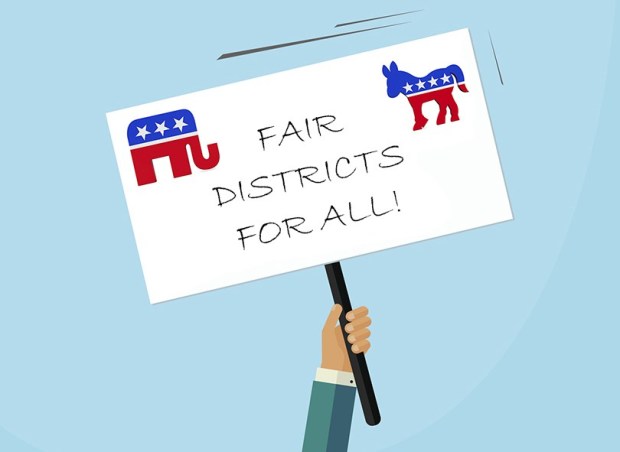
- Population Equality: Districts must comply with the U.S. Constitution’s requirement of “one person, one vote”
- Federal Voting Rights Act: Districts must ensure an equal opportunity for minorities to elect a candidate of their choice
- Geographic Contiguity: All areas within a district must be connected to each other, except for the special case of islands
- Geographic Integrity: Districts shall minimize the division of cities, counties, local neighborhoods and communities of interests to the extent possible, without violating previous criteria. A community of interest is a contiguous population which shares common social and economic interests that should be included within a single district for purposes of its effective and fair representation.
- Geographic Compactness: To the extent practicable, and where this does not conflict with previous criteria, districts must not bypass nearby communities for more distant communities
- Nesting: To the extent practicable, and where this does not conflict with previous criteria, each State Senate district will be composed of two whole State Assembly districts, Board of Equalization districts will be composed of 10 Senate districts.
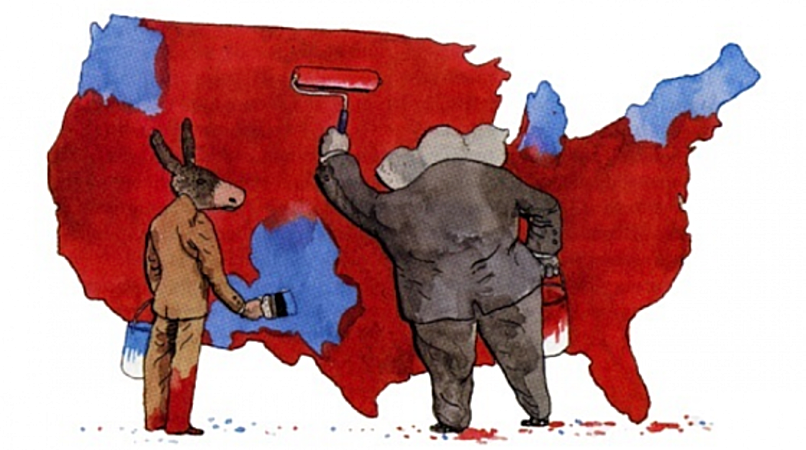
The days of a Republican or Democrat partisan drawing election districts must END all over America if one person one vote will continue to be true in America
According to the California independent commission law incumbents, political candidates and political parties cannot be members of the commission or taken into consideration when drawing district lines. Independent studies by the Public Policy Institute of California, the National Journal, and Ballotpedia have shown that California now has some of the most competitive districts in the nation.
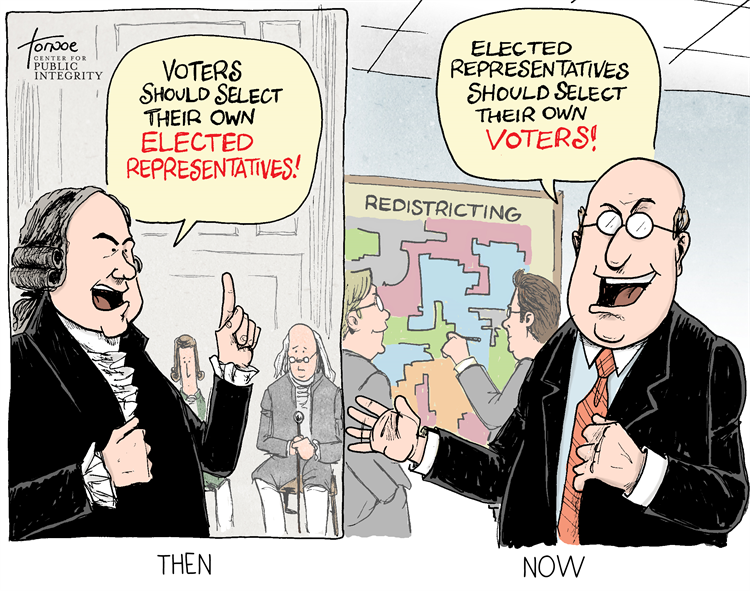
America is now in the rare position of needing to look back in order to successfully move forward
The Supreme Court’s green light to partisan gerrymandering is a WAKE-UP CALL TO ALL AMERICANS, red, yellow, black, and white whether Democrats, Republicans, and Independents to FIRE all politicians from drawing election districts. And to not vote for any politician running for any office that will not FIRST commit to using the powers of their elective office to establish an independent commission of NON-POLITICIANS, to draw ALL electoral districts within their state!!!
